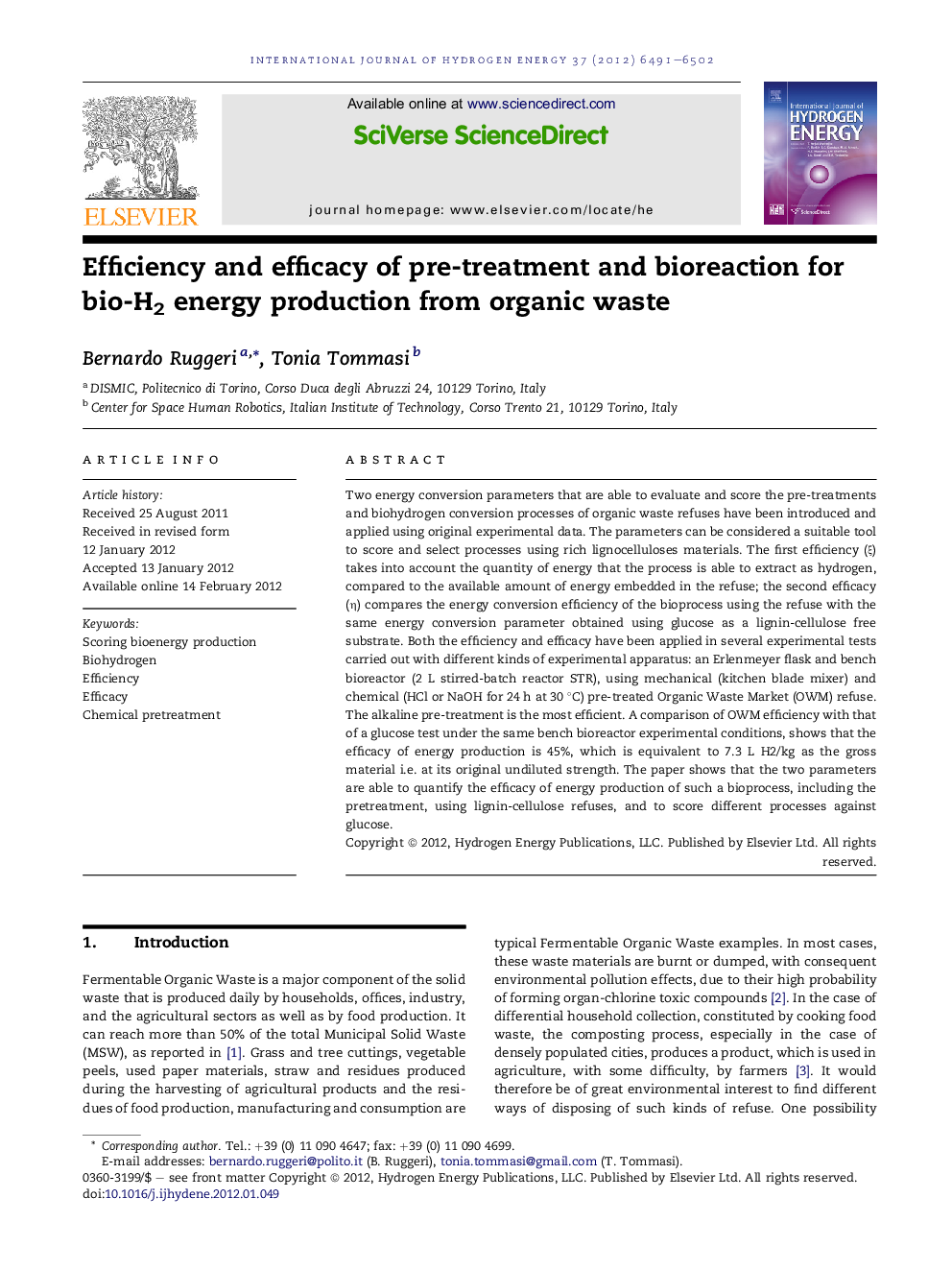| Article ID | Journal | Published Year | Pages | File Type |
|---|---|---|---|---|
| 1276588 | International Journal of Hydrogen Energy | 2012 | 12 Pages |
Two energy conversion parameters that are able to evaluate and score the pre-treatments and biohydrogen conversion processes of organic waste refuses have been introduced and applied using original experimental data. The parameters can be considered a suitable tool to score and select processes using rich lignocelluloses materials. The first efficiency (ξ) takes into account the quantity of energy that the process is able to extract as hydrogen, compared to the available amount of energy embedded in the refuse; the second efficacy (η) compares the energy conversion efficiency of the bioprocess using the refuse with the same energy conversion parameter obtained using glucose as a lignin-cellulose free substrate. Both the efficiency and efficacy have been applied in several experimental tests carried out with different kinds of experimental apparatus: an Erlenmeyer flask and bench bioreactor (2 L stirred-batch reactor STR), using mechanical (kitchen blade mixer) and chemical (HCl or NaOH for 24 h at 30 °C) pre-treated Organic Waste Market (OWM) refuse. The alkaline pre-treatment is the most efficient. A comparison of OWM efficiency with that of a glucose test under the same bench bioreactor experimental conditions, shows that the efficacy of energy production is 45%, which is equivalent to 7.3 L H2/kg as the gross material i.e. at its original undiluted strength. The paper shows that the two parameters are able to quantify the efficacy of energy production of such a bioprocess, including the pretreatment, using lignin-cellulose refuses, and to score different processes against glucose.
► Two energy parameters as a suitable tool to score bio-processes are defined and applied. ► The efficiency (ξ) considers the quantity of hydrogen energy extracted by bioreaction. ► The efficacy (η) compares the efficiency with that of glucose under same conditions. ► Original experimental tests on Oranic Refuses have been analized with the two parameter. ► The efficacy of energy production is 45%, equivalent to 7.3 L H2/kg of undiluted Organic refuses.
